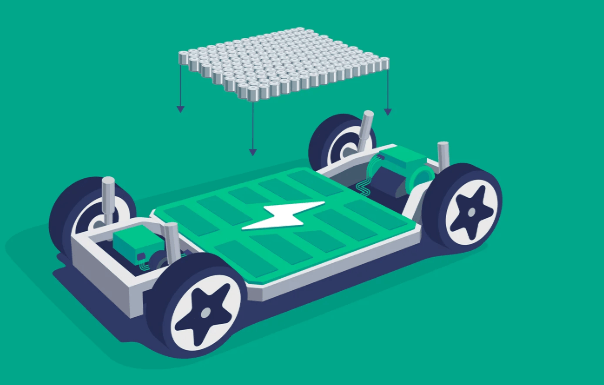The Evolution of Electric Vehicles and Battery Technology

Electric vehicles (EVs) have emerged as a transformative force in the transportation industry, heralding a shift towards cleaner, more sustainable mobility. This evolution has been driven by advances in technology, environmental awareness, and the relentless pursuit of innovation. At the heart of this revolution is battery technology, the cornerstone that has shaped the capabilities and adoption of electric vehicles. The story of EVs and their batteries is a tale of ingenuity, progress, and an eye toward a greener future.
The Beginnings of Electric Vehicles
The concept of electric vehicles is not new. In the late 19th century, EVs were among the first automobiles on the road. Early models, powered by rudimentary batteries, were quieter and cleaner compared to internal combustion engine (ICE) vehicles. However, limited range and the lack of charging infrastructure hindered their growth. By the early 20th century, the mass production of gasoline-powered cars by companies like Ford overshadowed electric vehicles, relegating them to a niche status for much of the century.
Resurgence of Electric Vehicles
The oil crises of the 1970s and growing environmental concerns in the late 20th century sparked renewed interest in electric vehicles. Governments and automakers began to explore alternatives to fossil fuels, leading to the development of experimental EV models. However, the true resurgence began in the 2000s, driven by advances in battery technology, rising fuel prices, and increasing awareness of climate change.
Companies like Tesla revolutionized the industry by demonstrating that EVs could be both high-performing and desirable. Tesla’s Roadster, introduced in 2008, showcased the potential of lithium-ion batteries, providing significantly longer ranges than earlier EVs. This innovation marked a turning point, setting the stage for the rapid growth of electric vehicles.
Advances in Battery Technology
The evolution of EVs has been inextricably linked to advancements in battery technology. Early EVs relied on lead-acid batteries, which were heavy, had limited storage capacity, and offered poor energy efficiency. The development of nickel-metal hydride (NiMH) batteries in the 1990s improved energy density and lifespan but still fell short of providing the performance needed for widespread adoption.
The introduction of lithium-ion batteries in the late 20th century transformed the landscape. These batteries offered higher energy density, lighter weight, and faster charging capabilities, making them ideal for electric vehicles. Lithium-ion batteries enabled EVs to achieve ranges that rivaled or exceeded those of traditional cars, addressing one of the primary concerns of consumers: range anxiety.
Modern Electric Vehicles
Today, electric vehicles are no longer niche products. Automakers worldwide have embraced EVs, developing models that cater to various segments, from compact city cars to luxury sedans and heavy-duty trucks. The introduction of affordable models like the Nissan Leaf and Chevrolet Bolt has made EVs accessible to a broader audience. At the same time, luxury brands like Porsche and Audi have entered the market, combining performance with sustainability.
Tesla continues to lead the way, pushing the boundaries of what EVs can achieve. Its Model S Plaid, for example, demonstrates that electric cars can be among the fastest and most technologically advanced vehicles on the road. Other automakers, including traditional giants like Ford, GM, and Volkswagen, are also heavily investing in electrification, aiming to phase out ICE vehicles in favor of EVs within the next few decades.
The Role of Renewable Energy
The rise of EVs is closely tied to the broader adoption of renewable energy sources. As countries transition to cleaner energy grids, EVs become even more sustainable, reducing their overall carbon footprint. Solar, wind, and hydroelectric power generation have provided the means to charge electric vehicles with minimal environmental impact, reinforcing the appeal of EVs as a green alternative to traditional cars.
Battery Innovations and the Future
Battery technology remains a focal point for researchers and engineers. Innovations such as solid-state batteries promise to revolutionize the EV industry further. These batteries replace the liquid electrolyte in traditional lithium-ion batteries with a solid material, increasing energy density, improving safety, and reducing charging times. Solid-state batteries have the potential to offer ranges exceeding 500 miles on a single charge, making EVs even more practical for long-distance travel.
Recycling and sustainability are also becoming critical considerations. As EV adoption grows, the demand for raw materials like lithium, cobalt, and nickel has surged. Companies are exploring ways to recycle used batteries and develop alternatives that reduce reliance on rare and environmentally sensitive materials.
Challenges in the EV Transition
Despite their advantages, electric vehicles face challenges that need to be addressed for widespread adoption. The cost of EVs, while decreasing, remains higher than that of ICE vehicles, primarily due to battery expenses. Expanding charging infrastructure is also essential, as many regions still lack adequate networks to support large-scale EV use.
Consumer education and acceptance are crucial. Some drivers remain skeptical about EVs due to misconceptions about their range, performance, or reliability. Governments, automakers, and advocacy groups must work together to dispel these myths and promote the benefits of EVs.
Government Policies and Incentives
Government policies have played a pivotal role in the growth of electric vehicles. Incentives such as tax credits, subsidies, and rebates have made EVs more affordable for consumers. Investments in charging infrastructure and commitments to phase out ICE vehicles by specific deadlines have further encouraged the transition.
Countries like Norway have become global leaders in EV adoption, with over 80% of new car sales being electric. Policies such as exemptions from tolls, reduced registration fees, and extensive charging networks have driven this success. Other nations are following suit, setting ambitious targets to electrify transportation.
The Global Impact of EVs
The shift to electric vehicles has profound implications for the environment, economy, and society. Reduced greenhouse gas emissions from EVs contribute to combating climate change and improving air quality. The move away from fossil fuels reduces dependence on oil, fostering energy independence and economic resilience.
The rise of EVs also creates new industries and job opportunities. From battery manufacturing to software development for autonomous vehicles, the EV revolution is reshaping economies and driving innovation.
The Future of Transportation
The evolution of electric vehicles and battery technology is far from over. Autonomous EVs, integrating artificial intelligence and advanced sensors, are poised to redefine transportation. Shared mobility services powered by electric and autonomous fleets promise to reduce traffic congestion and urban pollution.
Urban planners are adapting to accommodate EVs, with smart cities incorporating EV-friendly infrastructure. Charging stations, renewable energy integration, and seamless connectivity between vehicles and the grid are becoming integral to city planning.
Conclusion
The evolution of electric vehicles and battery technology marks a pivotal chapter in the history of transportation. From their humble beginnings to their current status as a cornerstone of sustainable mobility, EVs exemplify the power of innovation in addressing global challenges. Advances in battery technology, coupled with supportive policies and the rise of renewable energy, are shaping a future where clean, efficient, and accessible transportation is a reality for all. As EVs continue to evolve, they stand as a testament to human ingenuity and our commitment to a greener, brighter future.




